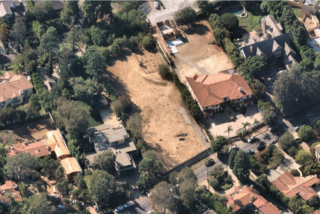From Brownfields to Green
- Share via
As a new year unfolds in front of us, I can’t help but marvel that history is about to repeat itself in regard to the development of the Ventura River valley.
A hundred years ago, the city fathers welcomed and promoted the discovery of oil on the West Side of Ventura. This discovery fueled the growth of commerce, industry and our city as we know it today.
Today, as community and civic leaders seek potential areas for business expansion and revitalization for the 21st century, again all eyes fall to that side of the city, known as the Avenue by its long-time residents. The hope this time is that the business expansion will take the form of land recycling through a program known as the Brownfields Initiative.
This program is sponsored by the federal Environmental Protection Agency and the California Center for Land Recycling, locally in partnership with the landowners and city of Ventura.
Brownfields are abandoned, idled or underutilized industrial and commercial facilities where expansion or revitalization is complicated by real or perceived environmental contamination. Both actual contamination and fear of liability for possible contamination have proven, in some cases, to dampen development interest in such sites.
Developers need to know all the variables when they are evaluating the merits of a project. Land with a storied past doesn’t lend itself to full disclosure without an expensive and protracted process. Hence the pressure locally to develop on open space and farmland because the history of the land use is known and viewed as easily mitigated.
By leapfrogging over these brownfields sites to “cleaner” dirt, we are putting an unfair burden on government and the local taxpayer to provide infrastructure and services that could be better met by recycling old sites with in-fill development.
The Brownfields Initiative brings together the many resources of state, federal and local governments, along with private sector investment, to help the landowners with site cleanup and remediation. Once this has been accomplished the local community again has property that is environmentally sound and ready to be marketed for reuse.
The present-day residents of Ventura owe a debt of gratitude to the oil wildcatters of the past, without whom the area would look like all the rest of the “trophy” California beach towns that are struggling to find an identity as they embark on the new century.
Oil fueled the prosperity of Ventura into the late 1960s. The colorful history of the Avenue is well-documented. Along with oil and oil support businesses, manufacturing and industrial uses began to spring up--all of them vital to a city with an economy that was otherwise one-dimensional. As oil production waned, other uses of the land started to take hold in and around the older residential sections of this community.
Residents, landowners and businesspeople, along with community activists, banded together five years ago to form the Westside Community Council. Through countless meetings and design workshops, present land uses were examined and guidelines for development were established and forged into two documents: the Westside Vision and the Westside Urban Design guidelines. These guidelines take into account the history of the area, the diversity of its inhabitants and the increased need for quality affordable housing.
The vision is to blend the design guidelines into the land recycling program and come out with a community that maintains its link to the past and is again providing opportunities for education and employment right in its own backyard.
This again would resemble Ventura of a century ago but with a modern twist. Instead of growth being initiated by fossil fuel industries, it would be fostered by the fuels of the future, renewable energy and technology. We could establish an eco-industrial business park and locate some of the currently incompatible businesses into this space where all the tenants would have a symbiotic relationship in regard to the products they made, along with water and energy use.
Imagine a metal recycling business located next to a rebar factory adjacent to a wood recycling company that not only uses green waste to create power for the park through the biomass process but also offers soil amendment products for sale to the public. Now throw in a solar power company that is not only generating electricity for the park but is getting paid to put power back into the grid and using that money for research on renewable energy and fuel cell technology.
Something out of a “Jetsons” cartoon, you might say, if all those companies didn’t already exist in Ventura, albeit not in one place.
Other parcels of recycled land could be marketed to high-tech software or biotech companies that could take advantage of the fiber optics cable already available in the area and easily accessible through retrofitting a system of old, unused oil pipelines.
The opportunities are endless as we embark on the new century. For this effort to succeed, it must be an inclusive partnership between the public and private sectors.
More importantly, it must respect the heritage, diversity and the promise of Ventura’s founding neighborhood as it transforms and evolves to meet the 21st century.
More to Read
Sign up for Essential California
The most important California stories and recommendations in your inbox every morning.
You may occasionally receive promotional content from the Los Angeles Times.










